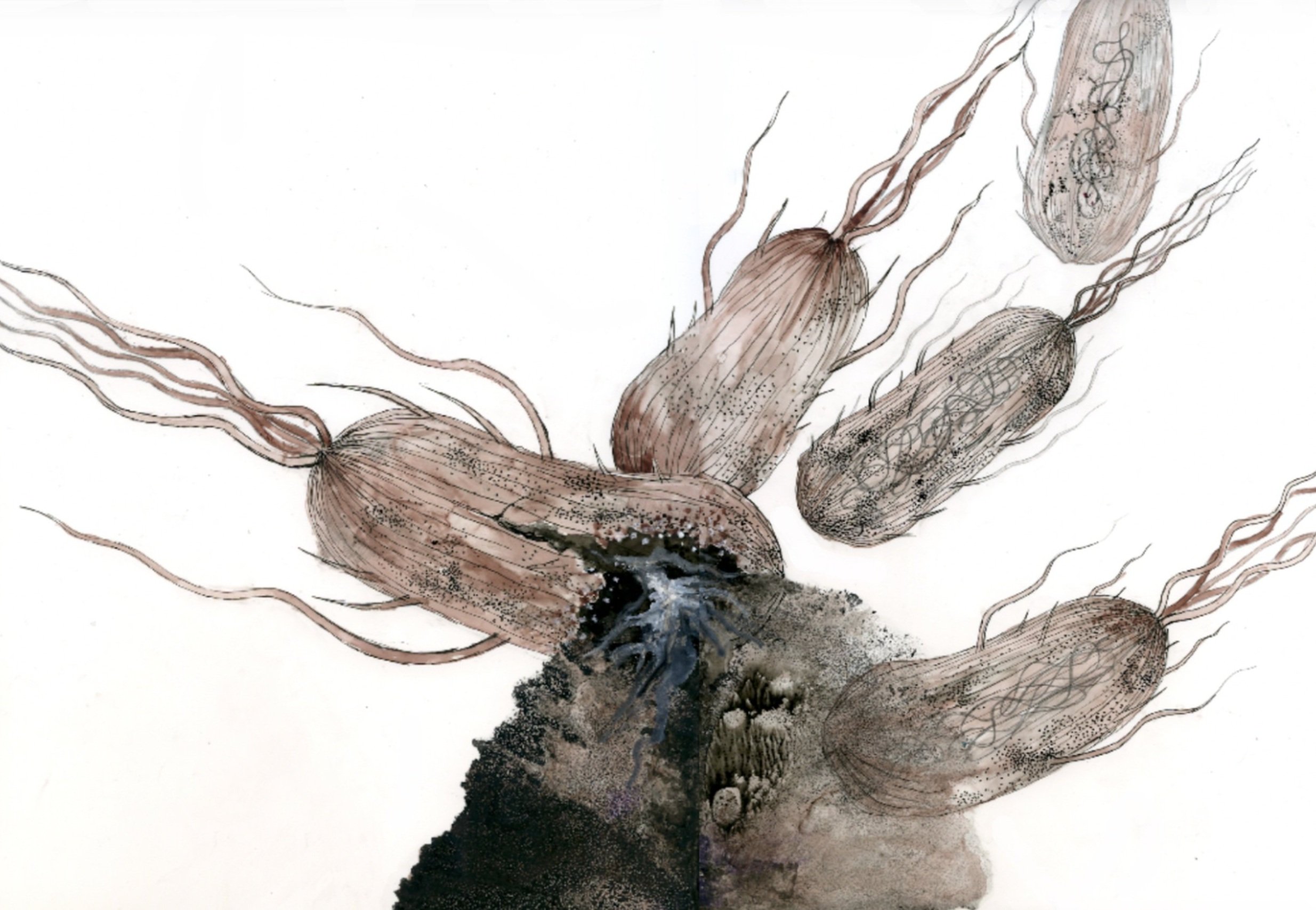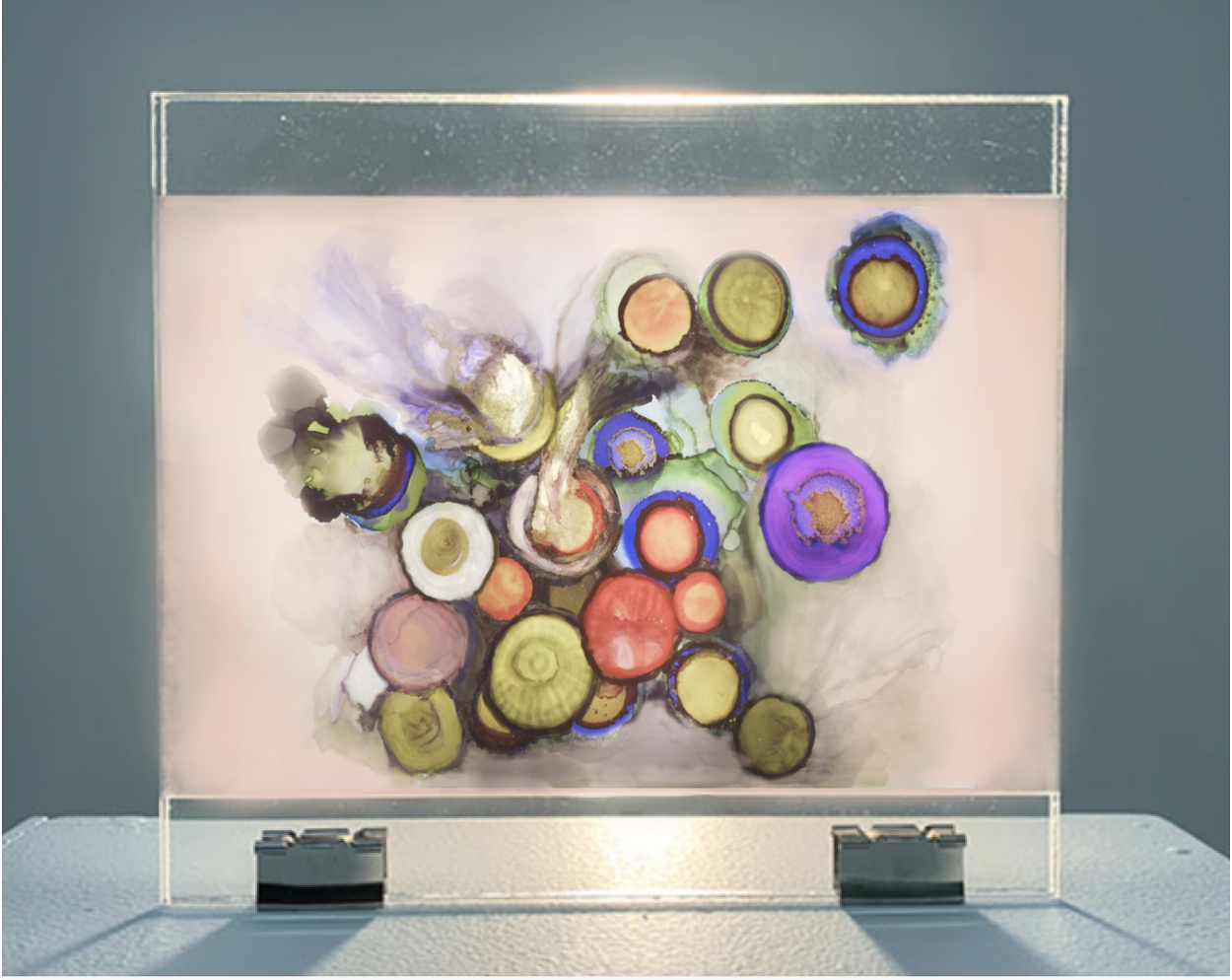Jane Zen
Rendering the Invisible is an exploration of the intersection of science and art—a visual representation of experimental research in biochemistry. It seeks to translate the scientific experience into illustrations that not only visualize data but also provide haptic access to scientific processes.
Scientifically, my research focuses on understanding the molecular mechanisms by which antimicrobial peptides and antibiotics interact to create synergy in killing bacteria. This research is important because it explores a new class of drugs that can overcome the shortcomings of conventional antibiotics—potentially defeating antibiotic resistance.
Experimentally, these therapeutic agents—antimicrobial peptides—have been observed to kill bacteria by interacting with and disrupting the bacterial membrane, but how they actually do this, remains unknown. Moreover, our ability to visualize these mechanisms is limited. The images included in this series seek to illustrate these molecular mechanisms and render them in new and engaging ways.
Consisting mostly of alcohol inks on opaque and translucent synthetic papers, these images portray the disruption and eventual explosion of the bacterial membrane when exposed to various peptides and drugs. Differences in the translucency of the papers work to create a sense of layering and dimension which is evocative of the cellular environment. Color schemes are explored to reflect the accuracy of molecular phenomena but also to exaggerate it artistically and heighten its significance to the viewer. Dry and wet mediums are combined in an attempt to create various effects and textures that enable viewers to imagine phenomena taking place within cells that remain otherwise unseen.
Through a process of exploration and experimentation, Rendering the Invisible aims to bridge the gap between art and science. The series seeks to translate what is scientifically obscure into information that is visually illuminating and to portray ideas we are unable to accurately visualize or study under a microscope.
Bursting through the Membrane. Molecular Dynamics membrane model, graphite, watercolor, and glass. 11 x 14 in.
Degradation of the Cell, watercolor and India ink on paper, 22 in x 28 in.
Synergistic Mechanism 1. Alcohol inks and watercolor on two sheets of synthetic paper, 11 in x 14 in and 9 in x 12 in respectively.
Synergistic Mechanism 2. Alcohol inks on translucent synthetic paper, 11 in x 14 in.
Bacterial Lysis. Alcohol inks on translucent synthetic paper in glass with light, 11 x 14 in.
Accidental spills of India ink on paper.
Accidental spills of India ink on paper 2.
The Great Drug Resistance, pencil and watercolor on synthetic paper, 11 in x 14 in.
Jane Zen is from Atlanta, Georgia, but moved to Massachusetts to attend Wellesley College. She graduated in 2021 with dual degrees and honors in Biochemistry and Studio Art. She is an aspiring researcher, artist, and scientific illustrator. She has been practicing art since she was very young. For more of her work, follow her facebook account.








